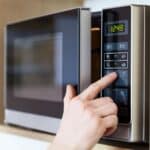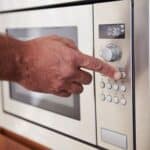Defrosting food is an essential step in the food preparation process, but the method you choose to defrost your food can greatly impact the safety and quality of the final product.
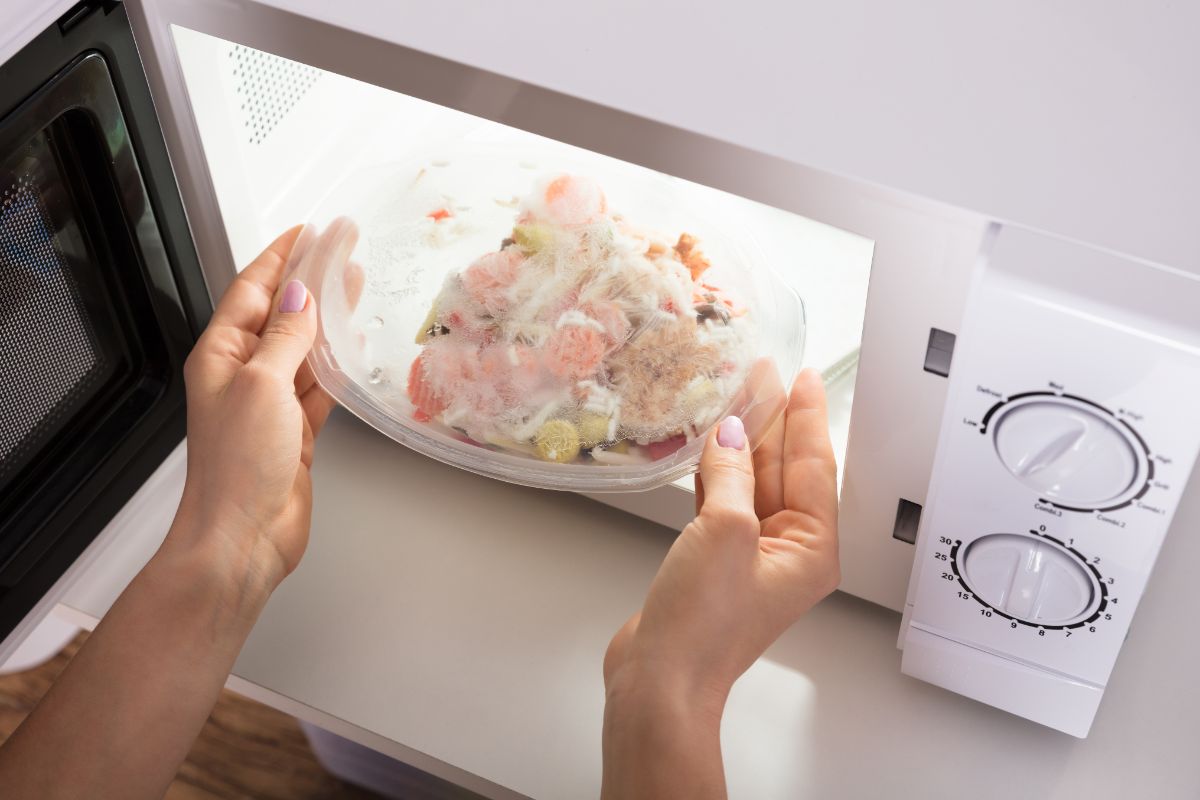
One popular method for defrosting food is using the microwave. However, this method is not recommended for a few reasons. This article will review what happens to food as it thaws and why you should stop defrosting food in the microwave.
Jump to:
What Happens When You Defrost Food From the Freezer?
When food thaws, the ice crystals in the frozen food begin to melt and turn into liquid. This process can cause several changes in the food, including
- Textural changes: As the ice crystals melt, they can cause cells in the food to burst, leading to a loss of texture and softer or mushier consistency.
- Nutritional changes: Some vitamins and minerals can be lost during freezing, and thawing can exacerbate these losses.
- Flavor changes: Freezing can cause changes in the flavor of food, and thawing can further alter the taste. This is particularly true for fruits and vegetables, which can lose their crispness and taste when thawed.
- Bacterial growth: If food is thawed improperly, such as at room temperature or in the microwave, it can cause bacteria to grow. This can lead to food spoilage and can make the food unsafe to eat.
It is important to thaw food the right way to keep these changes to a minimum and stop bacteria from growing.
Why Do Bacteria and Defrosting Safety Matter?
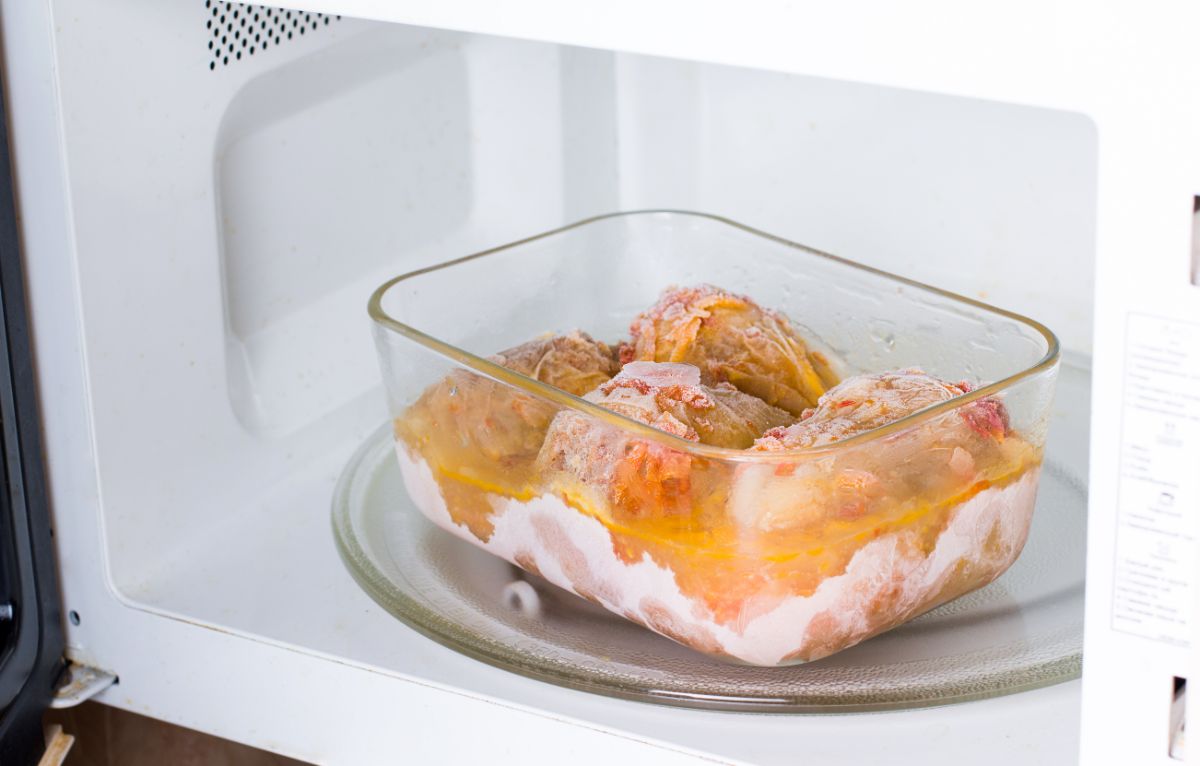
When food is frozen, bacteria are not active, but they are still present, and when food is thawed, the bacteria can become active again and begin to multiply. This can lead to food spoilage and can make the food unsafe to eat.
Food poisoning can happen when you eat something that has harmful bacteria, viruses, or parasites in it. This can occur when you eat or drink something that has gone bad. Depending on the type of bacteria or other contaminants in the bad food, food poisoning symptoms can differ. However, there are some common signs:
- Nausea
- Vomiting
- Diarrhea
- Abdominal cramps
- Fatigue
- Loss of appetite
- Fever
Food poisoning symptoms usually show up hours to days after eating bad food. Food poisoning can sometimes lead to serious complications and even death.
Certain people are more sensitive to food poisoning than others, including:
- Young children
- Pregnant women
- Elderly people
- Immunocompromised people
If you suspect you have food poisoning, it's best to see a doctor or go to the hospital if the symptoms are severe. In most cases, the symptoms will subside within a few days. Drink plenty of water, rest, and take over-the-counter medication if needed.
To avoid getting sick from food, it's important to handle food safely, store it correctly, and cook it at the right temperatures.
What are Unsafe Ways to Defrost Food?
Food defrosts, or thaws, when it is exposed to temperatures above its freezing point. There are several unsafe methods for defrosting food that you should avoid:
- Cold water thawing: This method involves submerging the food in cold water and changing it every 30 minutes to maintain its temperature. This way is faster than refrigerator thawing, but it requires more attention.
- Hot water: Some people may try to defrost food by placing it in a plastic bag and submerging it in hot water. This method can also lead to uneven thawing and bacterial growth, as the food is not at a consistent temperature.
- Room temperature thawing: This method involves leaving the food on the kitchen counter to thaw. This method is not recommended as it can cause bacterial growth and make food unsafe to eat.
- Microwave thawing: This method uses microwaves to generate heat, which causes the food to thaw quickly. This method can cause uneven thawing, leading to "hot spots" in the food that can foster the growth of harmful bacteria. This method is not recommended.
It's important to note that you should cook thawed food immediately. If not, it should be placed back in the refrigerator. Bacteria can start to grow on thawed food if it's left at room temperature for too long.
Why Shouldn't You Defrost in the Microwave?
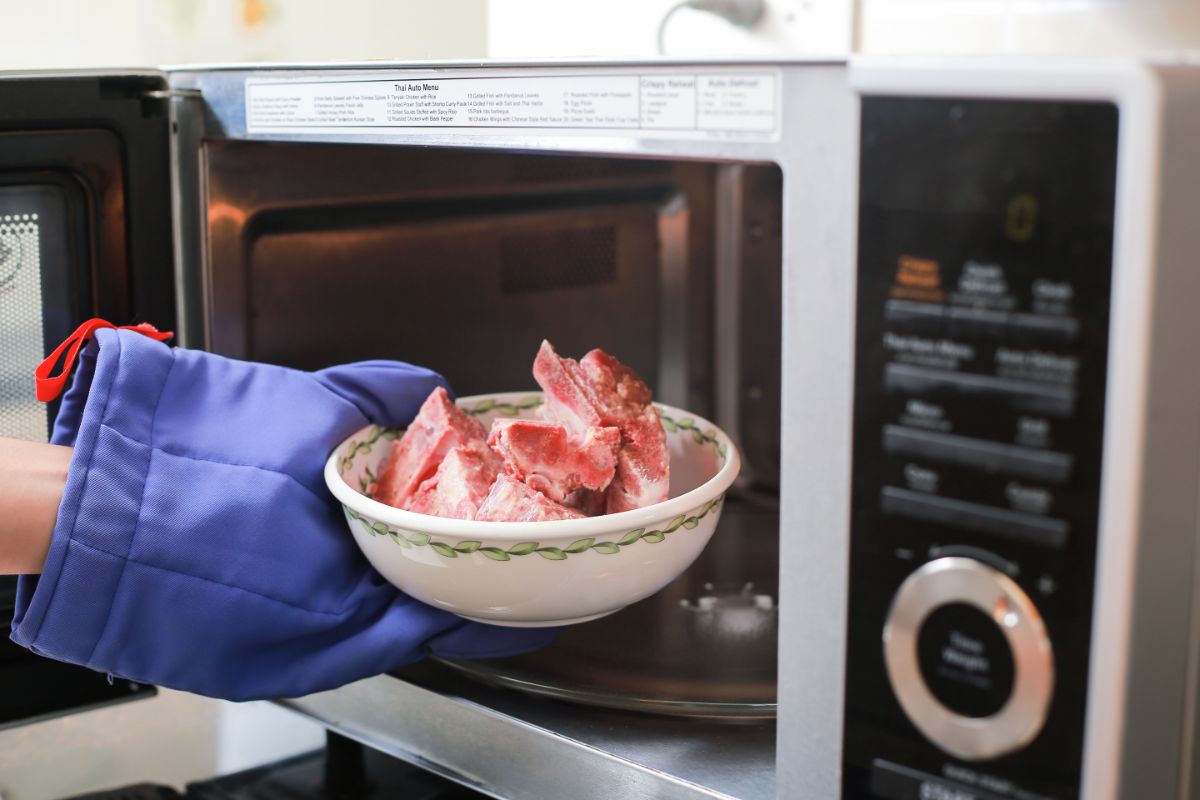
Defrosting food in the microwave can lead to several problems. Some of the reasons why you shouldn't defrost food in the microwave are as follows:
- Uneven thawing: When food is defrosted in the microwave, the heat generated by the microwave can cause uneven thawing. Some parts of the food may be warm enough for bacteria to grow, while others remain frozen.
- Loss of flavor and moisture: When meat or poultry is defrosted in the microwave, juices can be driven out, leading to a loss of taste and water in the final product.
- Cooked edges: When defrosting food in the microwave, the outside of the food may begin to cook while the center remains frozen.
- Risk of burning: When defrosting food in the microwave, it can be difficult to monitor the temperature, leading to burning or overcooking of the food.
- Faster but not safer: Some people think that defrosting food in the microwave is faster, but it is not safer. It is crucial to follow safe food handling practices to ensure the food is safe and has the best quality.
Thawing food at room temperature or in the microwave can create conditions ideal for bacterial growth. Room temperature is often above 40°F, the temperature at which bacteria can grow rapidly.
Is it Better to Defrost in the Fridge or Microwave?
It is generally considered safer and more effective to defrost food in the refrigerator than in the microwave. Defrosting in the refrigerator allows for a more gradual and consistent thawing process, which reduces the risk of bacterial growth and helps preserve the food's quality.
Additionally, when defrosting meat or poultry in the refrigerator, this thawing will not drive out juices as they may in the microwave, which can help retain the food's flavor and moisture.
You should place food in a container or on a plate to capture any juices that may leak out. This method can take several hours to a day or more, depending on the size and type of food.
On the other hand, defrosting food in the microwave can lead to uneven thawing, an increased risk of bacterial growth, and a loss of flavor and moisture. Additionally, it can be hard to keep track of the temperature, which can cause food to burn or be cooked too much.
Defrosting food in the refrigerator may take longer than defrosting food in the microwave. Still, it is a safer and more effective method for preserving food quality. Plan ahead and take the food out of the freezer ahead of time to make sure it has enough time to thaw properly in the fridge.
Frequently Asked Questions
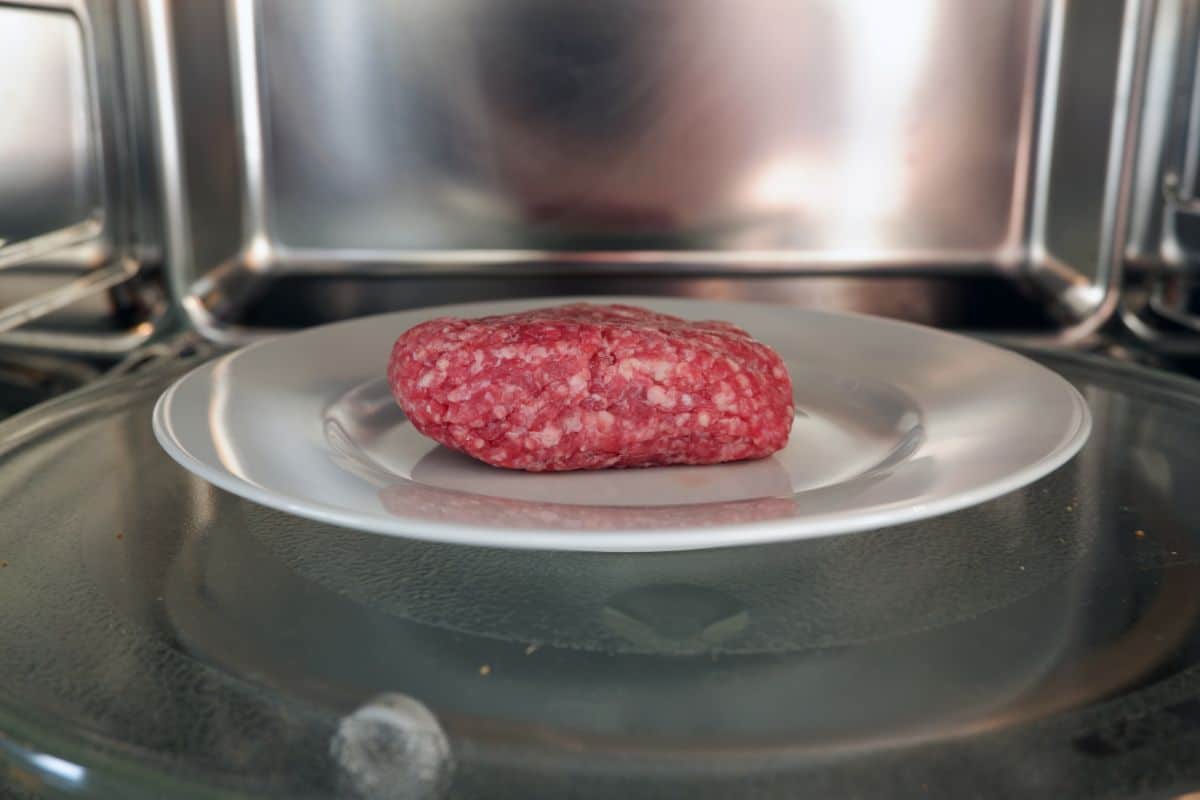
Here are some frequently asked questions about defrosting food in the microwave.
How much time does it take to defrost food in the refrigerator?
It depends on the size and type of food, but it can take anywhere from several hours to a day.
Can I cook the food immediately after defrosting it in the refrigerator?
Home cooks should cook the food immediately after defrosting it in the refrigerator, as long as it has thawed completely and is at a safe temperature (below 40°F) before cooking.
Can I refreeze food that has been defrosted?
If food has been properly cooked to a safe internal temperature (165°F) and then cooled and stored in the refrigerator, it is safe to refreeze. It's important to remember that it may reduce the quality of the food after being thawed and refrozen, but it is still safe to consume.
Can I defrost food at room temperature?
It is not recommended to defrost food at room temperature because it can cause bacterial growth.


